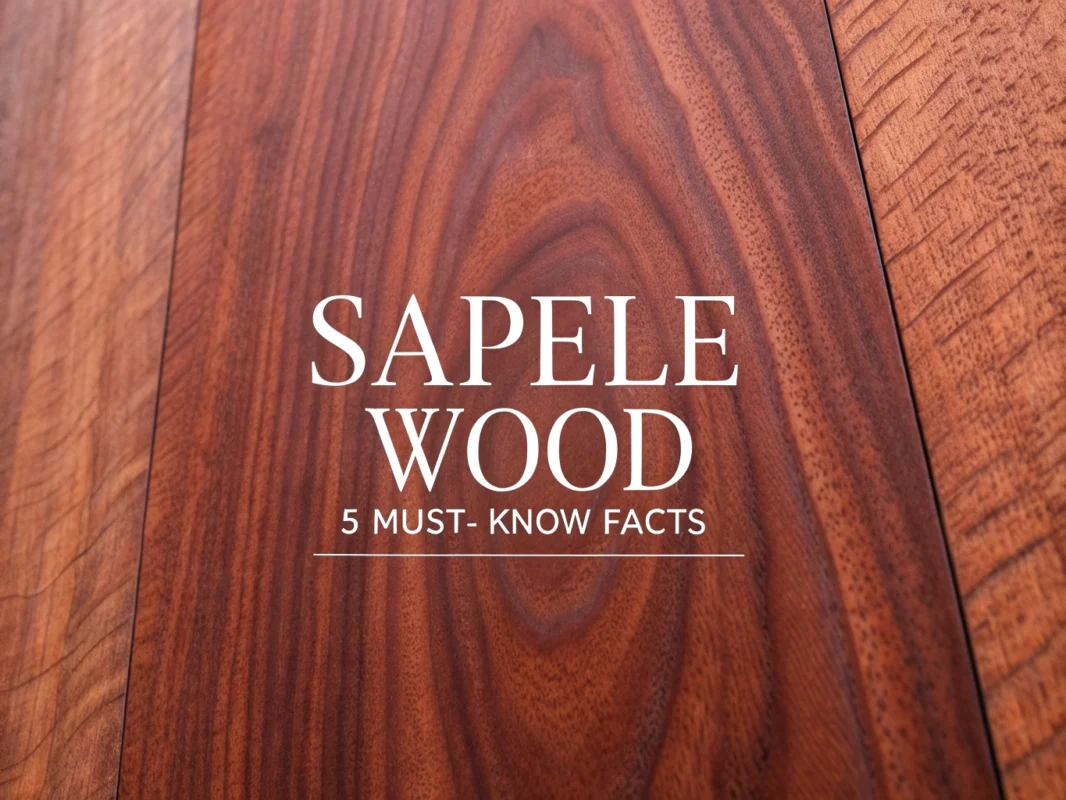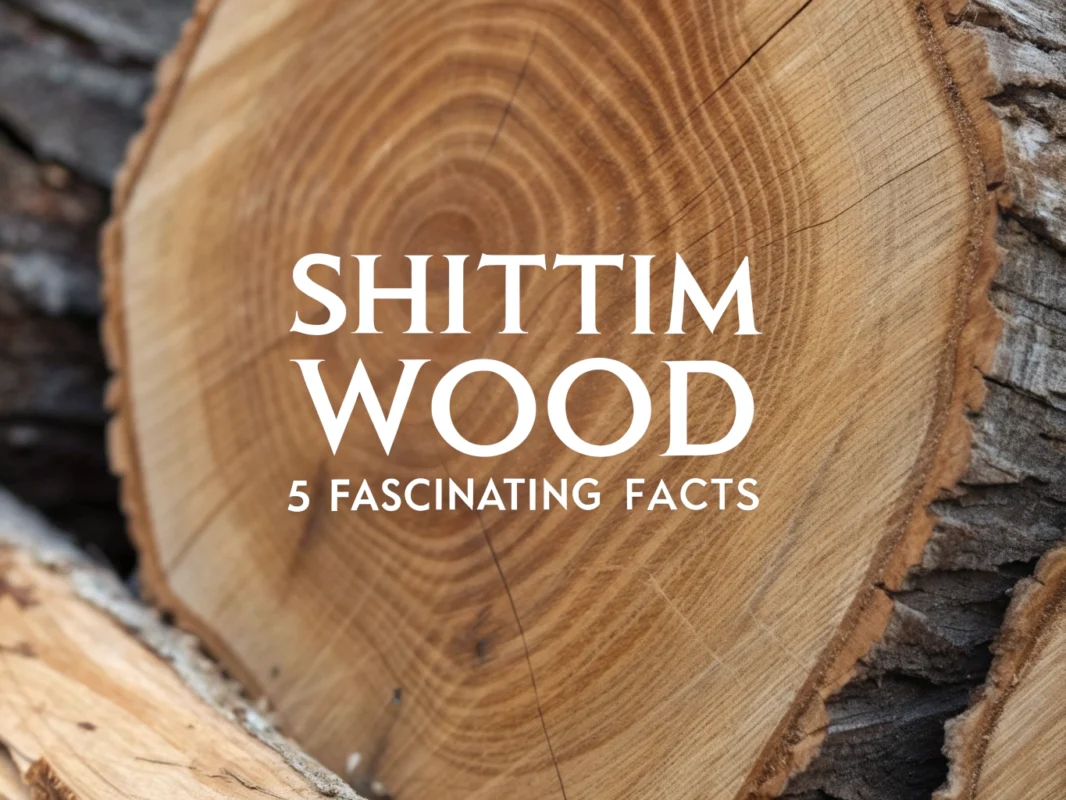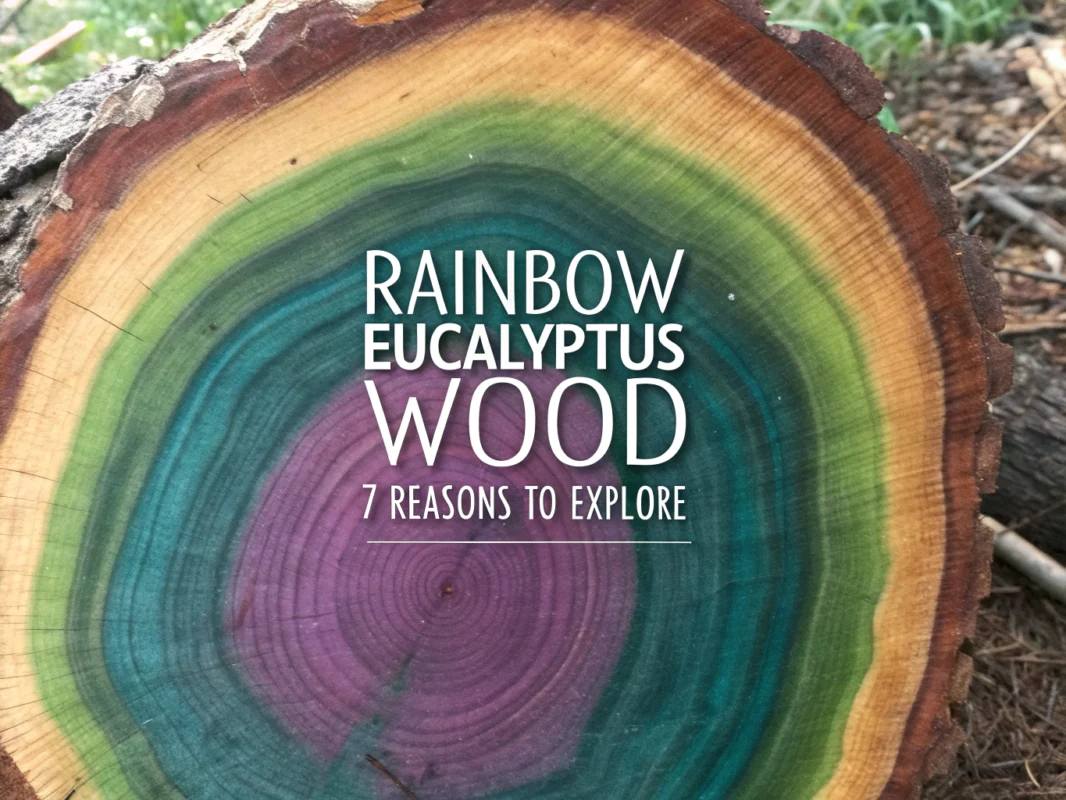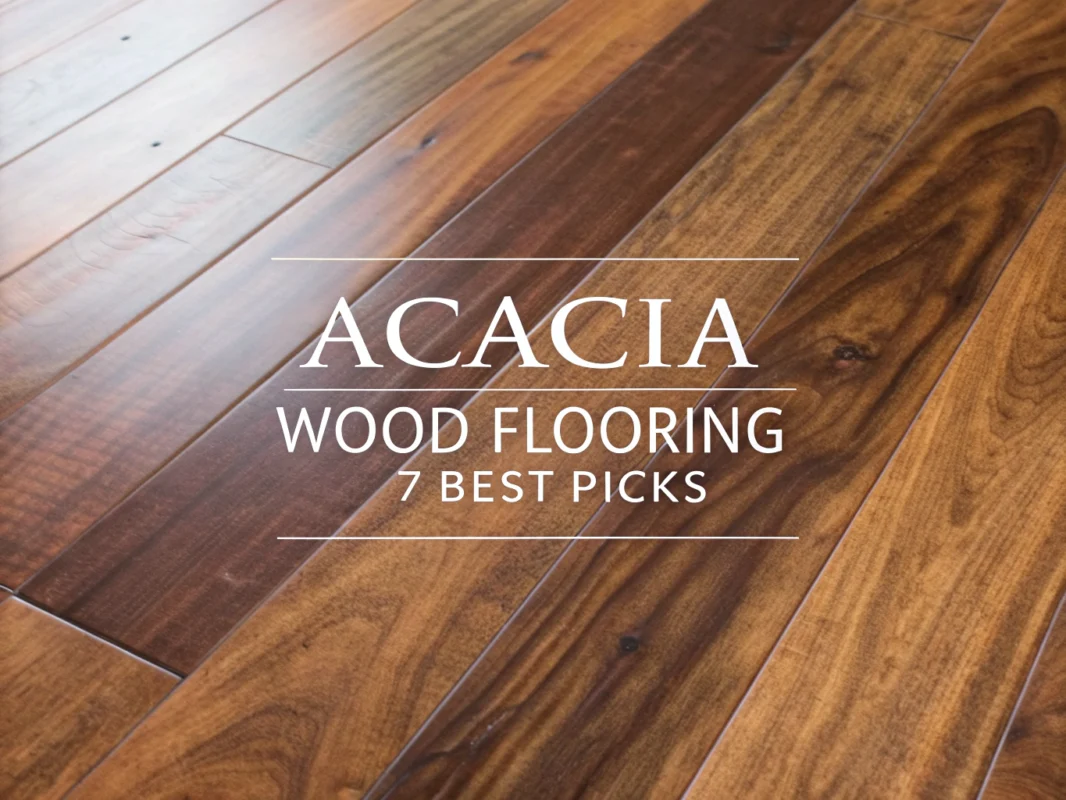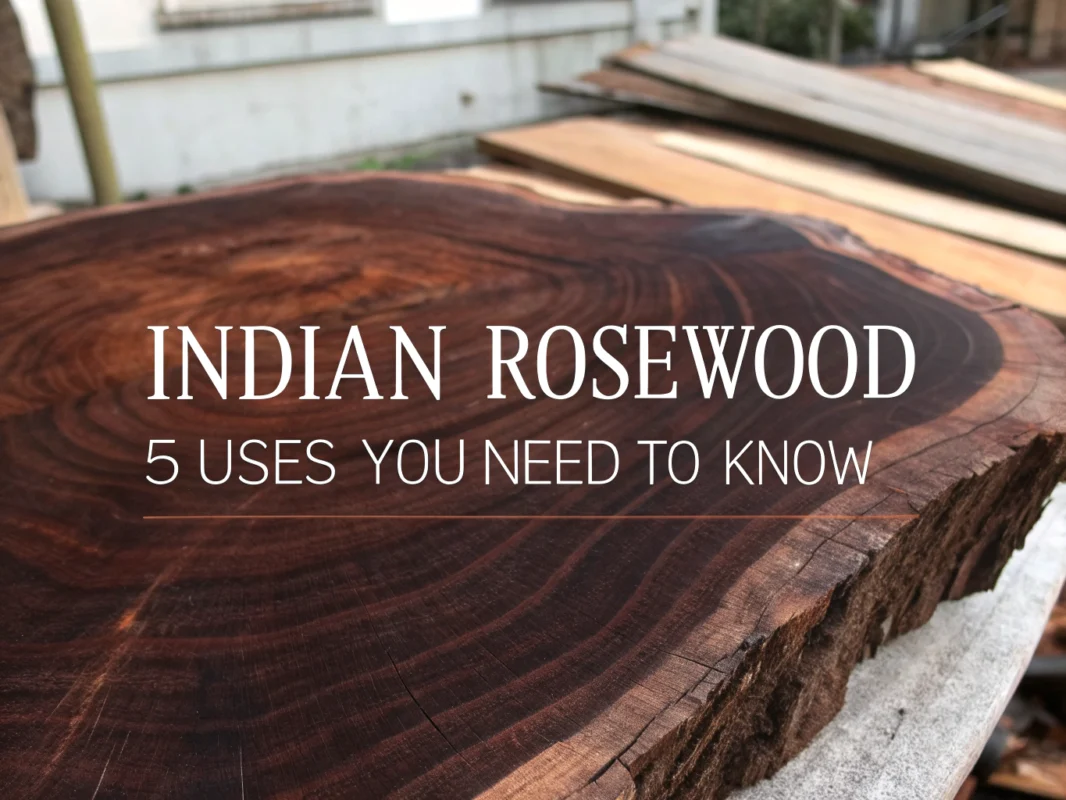
Jatoba Wood: 7 Surprising Facts You Probably Didn’t Know

Think oak is tough? Jatoba wood hits a Janka 2,690 lbf rating—nearly twice European oak. Fresh boards start light, then shift to a deep red with air and sun. Many shops sell it as Brazilian cherry, yet it isn’t a cherry. Here are seven quick facts, plus top picks for 2025, to help you pick and work this standout hardwood.
Table of Contents
Jatoba wood has surged in demand for its high hardness, rich red color, and performance in both flooring and outdoor projects, and the seven facts below show why makers and builders keep choosing it. I’ve pulled data on durability, sustainability, and workability so you can judge where jatoba fits best in your plans in 2025.
Fact #1: Jatoba is Almost Twice as Hard as European Oak
Jatoba’s Janka hardness sits at 2,690 lbf, which puts it in rare company for commercial hardwoods used in homes, parks, and public spaces. That rating is nearly double European oak, and it’s a big reason jatoba flooring resists denting in busy homes and high-traffic venues where heels, toys, and dropped tools are part of daily life (The Wood Database).
The density backs that up. At about 910 kg/m³ (57 lb/ft³) in average dry weight, boards feel heavy in hand, and the surface takes a fine polish. That density also means saw blades, jointer knives, and planers work harder, which affects feed rates, bit selection, and how often you sharpen or swap tooling.
I like to show the numbers so the difference is clear, so here’s a quick look at jatoba next to other common species. Treat this as a guide for tool setup, flooring expectations, and whether your project needs the extra dent resistance that jatoba wood delivers.
| Species | Janka Hardness (lbf) | Approx. Density (kg/m³) | Notes |
|---|---|---|---|
| Jatoba (Hymenaea courbaril) | 2,690 | ~910 | Very hard; high wear resistance; heavy |
| European Oak | ~1,100–1,200 | ~720 | Traditional choice; easier to machine |
| Hard Maple | 1,450 | ~705 | Common in gym floors; more workable |
| White Oak | 1,360 | ~770 | Strong, durable; tannin reacts with iron |
| Ipe | ~3,500 | ~1,050 | Even harder than jatoba; very demanding |
What does this mean in practice? I set slower feed rates, use carbide cutters, and keep a spare set of sharp blades ready. I also plan for extra milling time and pre-drill fastener holes so screws bite clean without heat buildup or split risk.
Fact #2: It’s Not Actually Brazilian Cherry (Despite the Marketing Name)
I still see “Brazilian Cherry” on labels, but jatoba isn’t a cherry at all. The wood sold as Brazilian Cherry comes from the species Hymenaea courbaril, while domestic cherry belongs to the Prunus genus, so there’s no botanical relationship.
The nickname stuck because aged jatoba can resemble cherry in color, especially under oil or varnish. Sellers leaned into that look in North America, and the name spread across flooring catalogs, trim kits, and even cutting board blanks as a marketing shorthand.
If you’re comparing options, look for the scientific name to avoid confusion and verify what you’re buying. For a deeper breakdown of the label and how it’s used in stores, this primer on Brazilian Cherry wood gives practical context, especially for flooring and furniture shopping.
Fact #3: Jatoba Wood Dramatically Changes Color Over Time
Freshly milled jatoba often looks surprisingly light—tan to pale orange-brown—before it darkens. Exposure to light and air triggers a natural darkening, and within months the wood shifts toward a deep red-brown that people often associate with classic “Brazilian Cherry” floors (McIlvain Lumber).
I factor this in on any visible project. If I’m building a panel door, I’ll expose all parts evenly before finishing to reduce mismatched tones, and I’ll warn clients that area rugs can leave lighter “footprints” on floors. This isn’t a defect; it’s the wood’s true character emerging under everyday light.
Finishes affect the look, but they don’t stop the shift. UV-resistant topcoats can slow the change, while penetrating oils tend to deepen the glow sooner. If you like a stable color from day one, pick a finish with UV inhibitors and plan for a gradual mellowing instead of a fast transformation.
For flooring or casework, I dry-fit a small sample board and leave it in the room for a week or two. You’ll get a preview of the tone your space will settle into, and you can match trim or paint choices around that richer shade so the final look feels cohesive.
If you’re curious how fast the shift happens, leave a small offcut on a sill with half the board covered by paper. After a few sunny days you’ll see the contrast, and that’s your cue to pre-expose parts evenly before assembly.
Fact #4: This Wood Can Last 30 Years in Outdoor Public Settings
Jatoba carries a Class 1 durability rating, which shows up in real projects far beyond patios and decks. City benches, boardwalks, and plazas built with jatoba often run for decades in harsh weather, under UV, and with constant foot traffic (mmcité: Jatoba FSC-certified tropical hardwood).
The wood resists insects and fungi well, and the density shrugs off dents and abrasion from public use. That mix makes it a natural fit for exterior furniture, cladding, handrails, and structural trim that gets rained on, dried out, and baked in the sun hundreds of times per year.
I’ve seen long runs of outdoor seating where only a few end boards needed swapping after many years. You can repair localized damage without tearing out the whole installation, and the fresh boards will darken to match. Fasteners matter in these builds, so I use stainless hardware and pre-drill to avoid splits.
Seal the end grain and any field cuts on exterior pieces. You’ll slow moisture uptake where the wood drinks the most, and extend the life of each component in harsh seasons.
Some clients like a silver-gray patina on exterior wood, and jatoba handles that path well if you skip film finishes and use a light penetrating oil a few times early on. If you prefer a deep red-brown, regular maintenance coats keep the color richer and hold off graying longer.
Fact #5: Jatoba is Sustainably Harvested Despite Amazon Origins
I hear people worry that a tropical hardwood can’t be responsibly sourced, but jatoba is a strong counterpoint. There’s wide use of FSC-certified supply, with tracked logs, selective cutting, and long intervals between harvests—often around 30 years—to let stands recover and keep mixed species intact (Rare Woods: Jatoba).
The species is listed as “Least Concern” by the IUCN, and it’s not on CITES appendices based on current assessments. That status doesn’t mean a blank check; it means conscientious mills and buyers can build responsible chains if they stick with certified sources and avoid clear-cutting models that harm local ecosystems.
My sourcing checklist is simple: ask for FSC paperwork, confirm the country and region of origin, and favor mills that track trees and document harvest cycles. I also look for sellers that work with local communities and pay on time—it supports stability and compliance up and down the chain. This guide to broader Brazilian wood categories can help you compare species on sourcing and durability before you buy.
If you’re a DIY buyer picking boards online, ask your retailer to confirm certification and the scientific name “Hymenaea courbaril” on the invoice. A small step at checkout signals that buyers value responsible forestry, and it pushes the market in the right direction.
Fact #6: The Wood is So Dense It’s Challenging Even for Professional Tools
At roughly 910 kg/m³, jatoba is heavy and unforgiving if you rush the cut. I treat it like working on hard maple turned up a notch: tighter grain, more heat at the tool edge, and a bigger penalty if you use dull blades or push too fast (Rare Woods USA: Jatoba).
The grain can be interlocked, which invites tearout where the fibers reverse. I get the best results with 40–60T high-quality carbide on the table saw, light jointing passes, and a scraper to refine tricky faces. For planing, I take thin cuts and feed at a consistent pace to avoid ridges or burning.
Fasteners and glue deserve special care. I pre-drill everything, often a bit deeper than usual to give screws breathing room and cut heat. For glue-ups, slow-set epoxy or a high-quality PVA works, and I leave more clamp time since dense wood squeezes glue lines hard and slows cure in cool shops.
Finishing is friendly once surfaces are prepped right. Sand progressively to at least 180–220 grit, vacuum, and wipe with a dry rag to lift dust from pores. Oils bring a glowing red-brown, while a clear waterborne topcoat gives a more neutral tone with less ambering; either way, let the color shift run its course.
- Shop setup tips: Use carbide cutters, slow feed rates, and thin passes.
- Keep a spare blade ready; jatoba dulls edges faster than oak or maple.
- Pre-drill and wax screws to reduce heat and snapping risk.
- Use a scraper to tame interlocked grain where sandpaper starts to burnish.
- Collect dust well; a few folks report skin irritation from fine dust.
- Test finishes on offcuts; UV and time will deepen the tone after install.
Small turnings and tool handles are a joy with sharp tools and patience. You’ll get crisp details and a silky polish right off the tool on a good day. If a catch happens, don’t chase it with force; reset, take a lighter cut, and let the steel do the work.
Top Jatoba Wood Products for 2025
If you want to try jatoba without committing to a full floor or deck, the picks below cover utensils, turning stock, and dimensioned boards for small builds and trim. I’ve used items like these to test finishes, confirm color matches, and dial in tool settings on dense hardwood.

Earlywood Jatoba Scraper and Turner, 10 in
- Durable Jatoba hardwood resists wear
- Handmade in USA with smooth rounded edges
- Multi purpose scraper egg turner and saute spatula
- Safe for cast iron and gentle on cookware
- Easy to clean and maintain with natural oil finish

Exotic Pen Blanks Variety Pack, 12 Count
- Mix of Bloodwood Mexican Ebony Jatoba and Hard Maple
- Consistent 5 x 3/4 x 3/4 size fits most pen kits
- Dense stable stock for smooth turning with fewer tearouts
- Striking color contrast for unique custom designs
- Sands and finishes cleanly for a polished result

Brazilian Cherry Jatoba Board, 3/4 x 6 x 36
- Premium hardwood with rich reddish brown color
- 3/4 x 6 x 36 size for panels shelves and small furniture
- High density for wear resistance and long life
- Machines glues and finishes well with sharp tools
- Ideal for fine woodworking accents and inlays

Brazilian Cherry Jatoba Board, 3/4 x 3 x 24
- Compact 3/4 x 3 x 24 board for trim boxes and small parts
- Dense durable wood for long lasting projects
- Warm reddish tone adds visual depth
- Works well with sharp carbide tools adhesives and finishes
- Stable stock for accurate cuts and clean edges

Jatoba Knife Scales, Doc of All Trades
- Matched pair scales for symmetrical handles
- Dense Jatoba adds strength and balance
- Attractive grain takes a smooth polish
- Pre cut to speed up handle shaping
- Bonds securely with pins and epoxy

Brazilian Cherry Jatoba Board, 1/4 x 3 x 24
- Thin 1/4 x 3 x 24 stock for inlays veneers and crafts
- Hardwearing wood for durable fine details
- Consistent dimensions for precise fits
- Takes glue stain and clear finishes beautifully
- Machines and sands smoothly with crisp edges

Jatoba Board S4S, 3/4 x 8 x 36 by WOODNSHOP
- Surfaced four sides for ready to use convenience
- 3/4 x 8 x 36 size suits shelves panels and furniture parts
- Dense Jatoba offers exceptional wear resistance
- Rich color and grain elevate any build
- Straight stable stock for accurate milling

Thin Brazilian Cherry Boards, 10 Pack
- Ten thin boards for batching small projects and laminations
- Brazilian Cherry hardness adds strength and wear resistance
- Consistent sizing for quick layouts and repeatable cuts
- Warm reddish hues finish to a rich glow
- Glues sands and polishes well for a refined look

Jatoba Board S4S, 1/4 x 10 x 24 by WOODNSHOP
- Surfaced four sides panel ready for immediate use
- 1/4 x 10 x 24 size is great for wide panels case backs and crafts
- Dense Jatoba resists dents and wear
- Fine grain stains and finishes to a rich luster
- Stable stock cuts cleanly with minimal tearout
Start small with utensils or pen blanks if you’re new to jatoba, then step up to panels and shelves once your tools and settings feel dialed in. The reward is a surface that looks premium, holds up for years, and brings a deep warm tone that keeps improving with age.
FAQs
What Are The Uses Of Jatoba Wood In Furniture Making?
Jatoba (often sold as Brazilian Cherry) is prized for its rich color and extreme hardness, making it great for high-wear furniture such as dining tables, desks, benches, cabinets, stair treads, and countertops. It machines cleanly with sharp tools, takes glue and finishes well, and its striking reddish-brown tone also works beautifully for contrasting inlays and veneers; just pre-drill for fasteners and use sturdy joinery because it is dense and heavy.
Is Jatoba Wood A Sustainable Option For Flooring?
It can be a sustainable choice when sourced responsibly—look for FSC or equivalent certification, verified country of origin, and suppliers with transparent chain of custody. Its long service life and excellent wear resistance reduce replacement frequency, but because it is often imported, choosing certified or reclaimed stock and low-VOC finishes helps minimize environmental impact.
How Does Jatoba Wood Compare To Oak In Terms Of Hardness?
On the Janka scale, Jatoba averages around 2,350 lbf, while Red Oak is about 1,290 and White Oak about 1,360—so Jatoba is significantly harder and more dent-resistant. The trade-offs are greater tool wear, a bit more movement with humidity, and a tougher installation that benefits from acclimation, sharp blades, and pre-drilling.
What Is The Best Way To Maintain Jatoba Wood Floors?
Sweep or vacuum regularly and damp-mop with a pH-neutral hardwood cleaner; avoid steam, excess water, and oil-soap if the floor is finished with polyurethane. Use doormats and felt pads, wipe spills promptly, maintain indoor humidity around 35-55%, protect from strong sunlight to limit darkening, and recoat the finish as needed instead of sanding aggressively.
Can Jatoba Wood Be Used For Outdoor Projects?
Yes—its density and natural durability allow it to perform well for decking, stairs, and outdoor furniture when finished and maintained properly. Pre-drill and use stainless fasteners, seal end grain, apply a UV-resistant exterior oil or let it weather to a silver-gray, allow for seasonal movement, and avoid ground contact or constantly wet locations for best longevity.


